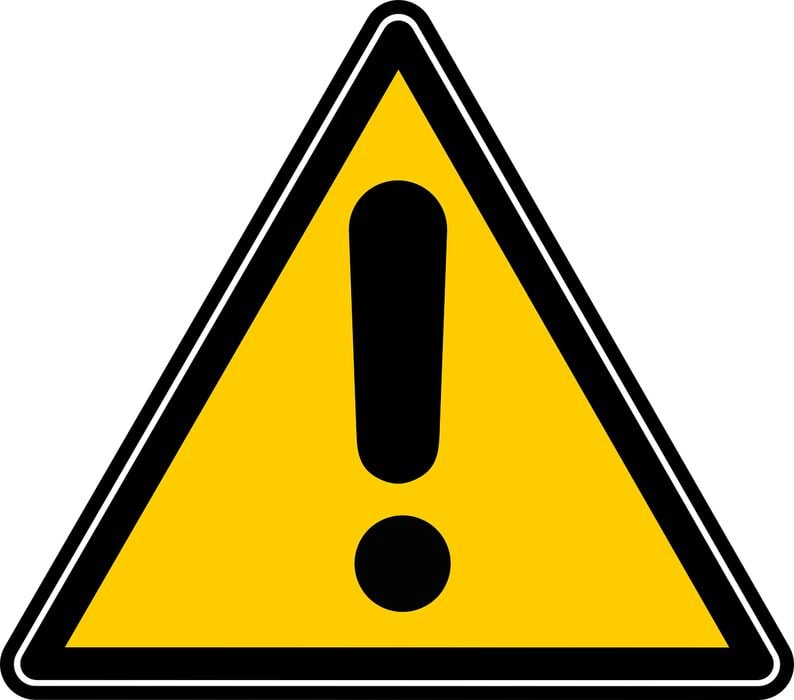
3D printing is thought to be a relatively safe activity, but is it really?
It turns out there are multiple types of hazards that appear on various styles of 3D printers, and in some cases operators are unaware they exist.
Whether installed at a factory or in a bedroom, 3D printers can be hazardous. The degree of danger varies considerably by device, as manufacturers usually attempt to reduce hazardous conditions through the design of their equipment.
This publication strives to promote safe use of the technology, and therefore it’s time to make a list of the major hazards one might encounter when operating a 3D printer.
Let’s take a look at the major hazard categories for 3D printers.
Nanoparticles
Nanoparticles are extremely tiny particles of 3D print material that are emitted during operation. For FFF 3D printers, the filament is heated during extrusion. That heat tends to release a small portion of the filament material into the atmosphere.
The size of the particles is so incredibly small they are able to become airborne and flow through the air freely, where they could be inhaled and lodge in a person’s lungs.
The level of danger varies considerably, and it depends on several factors. Generally, higher heat levels tend to release more nanoparticles. There are also certain materials that emit far more nanoparticles at a given temperature than others (I’m looking at you, ABS.)
Solution: Enclose the equipment if it isn’t already, and ensure there is a suitable air filter to clean out the nanoparticles. Failing that, ensure there is proper ventilation for the work area.
VOCs
Similar to nanoparticles, many 3D print materials release VOCs, or volatile organic compounds. These are a basket of chemicals that vary depending on the specific material involved, and there could be dozens of types emitted by a single material. Unfortunately, some of them could be toxic and you might be breathing them into your lungs.
Solution: Enclose the equipment if it isn’t already, and ensure there is a suitable air filter to clean out the nanoparticles. Failing that, ensure there is proper ventilation for the work area.
Burning
Many 3D print processes involve heat. The most commonly seen is in FFF systems, where a filament is heated to extreme temperatures. That’s done in the hot end, where the nozzle tip can reach up to 300C, depending on the situation.
If you happened to stick your hand into the machine at that point you might burn yourself. A hot nozzle is not visibly different from a cold nozzle, and you could be in for a surprise if doing machine maintenance.
Other than FFF equipment, many other 3D print processes involve heat. At the conclusion of a print, you may find the removable print bed too hot to touch, or even the print itself.
Solution: Don’t touch the equipment until it is safe!
Pinching
3D printers are inherently mechanical devices. Their motion systems involve stepper motors, belts and pulleys. When these are in operation it’s important not to stick your fingers in places where they could get caught.
This might seem obvious, but with many desktop 3D printers having an open gantry format, it’s incredibly easy to poke your fingers into the machine when it’s operating to, say, get a stray piece of plastic off the bed.
If you’re unlucky, your finger is caught in a belt, and that’s not fun. If you’re smart, you wait until the print finishes.
Solution: Don’t touch the equipment until it is safe!
Toxicity
Almost all 3D printer resins are toxic to one degree or another, and that’s why manufacturers recommend using nitrile gloves when handling resin 3D printers and their materials.
Should your skin be exposed to the toxic resin, at first nothing much may happen. However, repeated exposures could gradually build up a resistance in your body, and severe reactions could happen on subsequent exposures.
Solution: Always wear nitrile gloves when handing resin 3D printers and resin prints. Develop a “clean” workflow to minimize drips and exposure to resin when operating the printer and especially when post processing.
Fire
Heat from a 3D printer can in some cases generate a fire. This can happen for a variety of reasons, but could include unusual situations such as flammable material falling into an open gantry machine, or a firmware fault endlessly heating the hot end until it melts and ignites a fire.
This unfortunate situation can be aggravated by the presence of nearby flammable materials, such as IPA for cleaning prints, cardboard enclosures or even plain paper.
Solution: Always watch your machine or be nearby during operations; never leave a machine running on its own. Install smoke detectors and have a fire extinguisher nearby.
Explosions
Can 3D printers explode? Not exactly, but some 3D print materials can indeed explode.
Industrial 3D printers make use of fine powders, and certain metal powders are actually explosive. Titanium, a very popular metal material for 3D printing, can explode if sufficiently heated. This scenario has many times resulted in structure fires where poor powder handling occurred.
Solution: Absolutely follow all workflows and procedures when dealing with metal powders.
